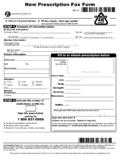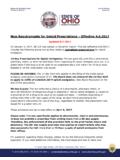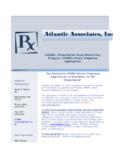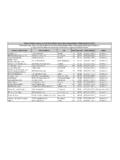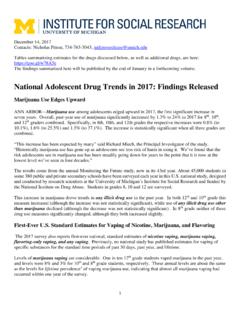Transcription of HANDOUT Employers Must Provide and Pay for PPE
1 HANDOUT #7 Employers Must Provide and Pay for PPEP ersonal Protective Equipment (PPE)The Occupational Safety and Health Administration (OSHA) requires that Employers protect youfrom workplace hazards that can cause injury or illness. Controlling a hazard at its source is thebest way to protect workers. However, when engineering, work practice and administrativecontrols are not feasible or do not Provide sufficient protection, Employers must Provide personalprotective equipment (PPE) to you and ensure its is equipment worn to minimize exposure to a variety of hazards. Examples include itemssuch as gloves, foot and eye protection, protective hearing protection (earplugs, muffs), hard hatsand Must Pay for Personal Protective Equipment (PPE)On May 15, 2008, a new OSHA rule about employer payment for PPE went into effect. With fewexceptions, OSHA now requires Employers to pay for personal protective equipment used tocomply with OSHA standards. The final rule does not create new requirements regarding whatPPE Employers must standard makes clear that Employers cannot require workers to providetheir own PPE and the worker s use of PPE they already own must becompletely voluntary.
2 Even when a worker provides his or her own PPE, theemployer must ensure that the equipment is adequate to protect the workerfrom hazards at the of PPE that Employers Must Pay for Include: Metatarsal foot protection Rubber boots with steel toes Non-prescription eye protection Prescription eyewear inserts/lenses forfull face respirators Goggles and face shields Fire fighting PPE (helmet, gloves, boots,proximity suits, full gear) Hard hats Hearing protection Welding PPEE mployer ObligationsWorkers should: Performing a "hazard assessment" of theworkplace to identify and control physicaland health hazards. Identifying and providing appropriate PPEfor employees. Training employees in the use and care ofthe PPE. Maintaining PPE, including replacing wornor damaged PPE. Periodically reviewing, updating andevaluating the effectiveness of the PPEprogram. Properly wear PPE Attend training sessions on PPE Care for, clean and maintain PPE, an Inform a supervisor of the need to repairor replace #7 Employers Must Provide and Pay for PPEP ayment Exceptions under the OSHA RuleEmployers are not required to pay for some PPE in certain circumstances: Non-specialty safety-toe protective footwear (including steel-toe shoes or boots) and non-specialty prescription safety eyewear provided that the employer permits such items to beworn off the job site.
3 (OSHA based this decision on the fact that this type of equipment isvery personal, is often used outside the workplace, and that it is taken by workers fromjobsite to jobsite and employer to employer.) Everyday clothing, such as long-sleeve shirts, long pants, street shoes, and normal workboots. Ordinary clothing, skin creams, or other items, used solely for protection from weather,such as winter coats, jackets, gloves, parkas, rubber boots, hats, raincoats, ordinarysunglasses, and sunscreen Items such as hair nets and gloves worn by food workers for consumer safety. Lifting belts because their value in protecting the back is questionable. When the employee has lost or intentionally damaged the PPE and it must be Standards that ApplyOSHA General Industry PPE Standards : General requirements andpayment : Eye and face protection : Respiratory protection : Head protection : Foot protection : Electrical protective devices : Hand protectionOSHA Construction PPE Standards : Personal protective equipment : Criteria for personal protectiveequipment : Occupational foot protection : Head protection : Hearing protection : Eye and face protection : Respiratory protectionThere are also PPE requirements in shipyards and marine terminals and many standards onspecific hazards, such as : Bloodborne pathogens and : Permit-requiredconfined standards are online : Employers Must Provide and Pay for PPE, New Jersey Work Environment Council(WEC) Fact Sheet OSHA Standards, (h) and (d) Employer Payment for Personal Protective Equipment Final Rule, Federal Register.
4 November 15, 2007 (Volume 72, Number 220)2










